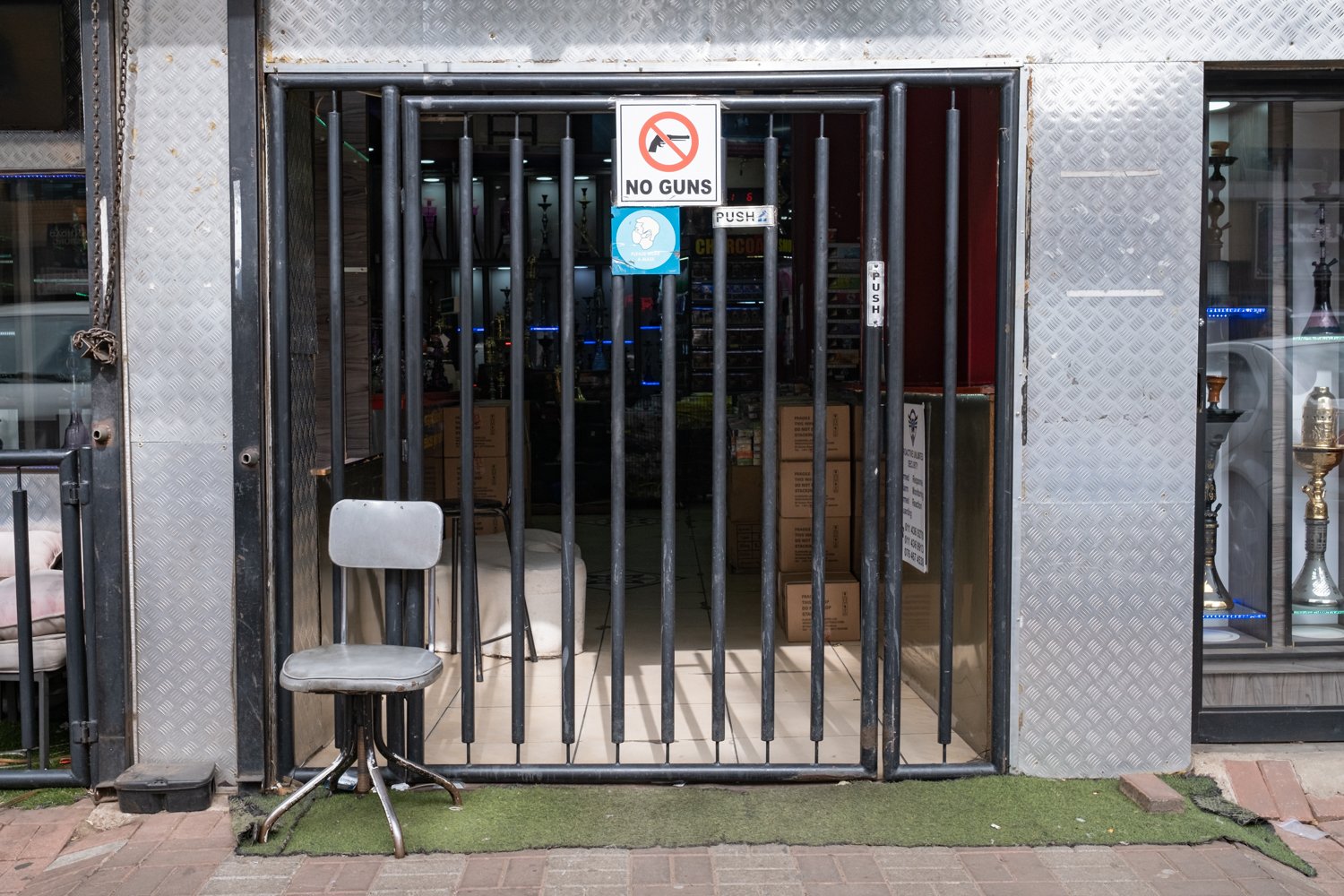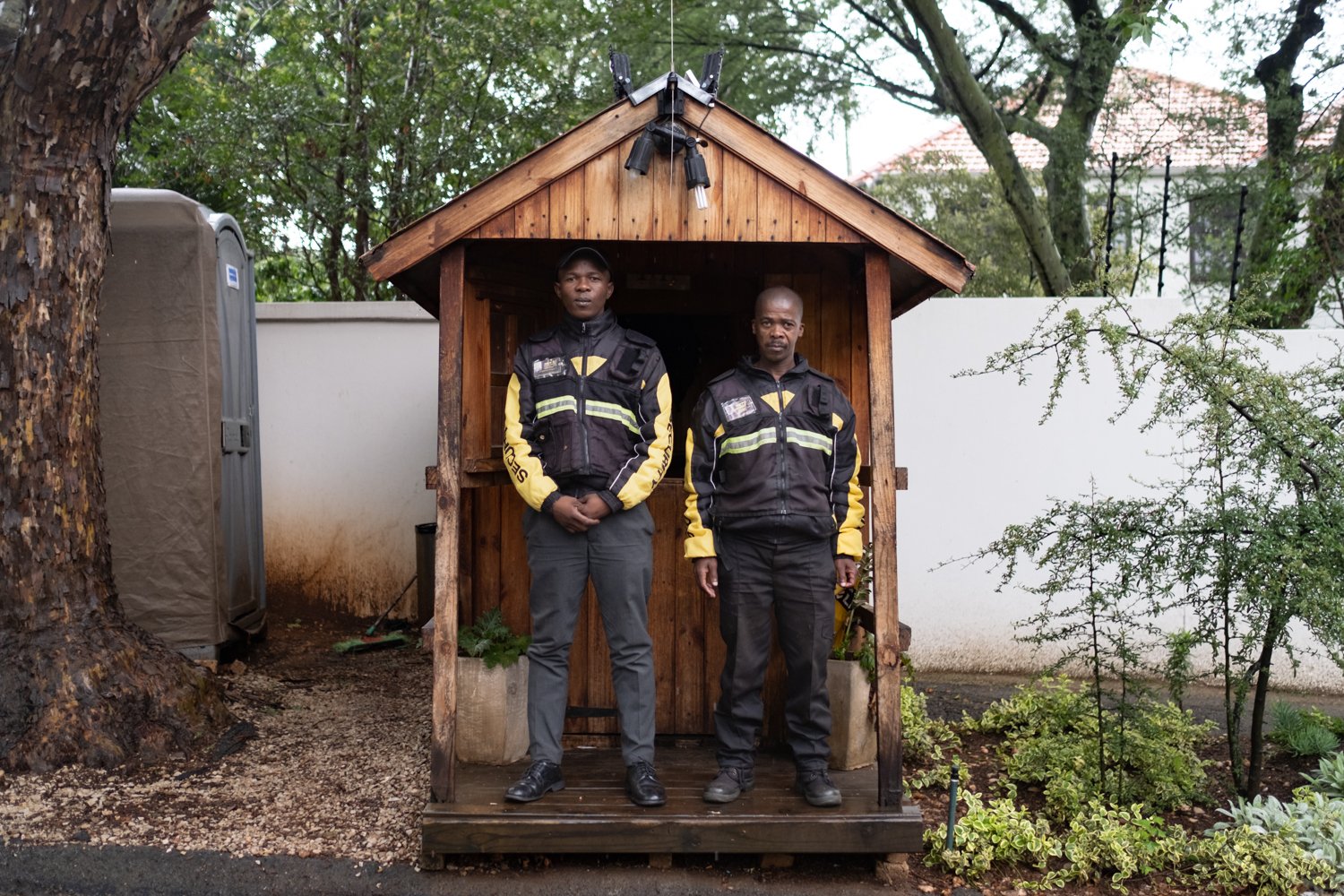
Safe Zone
Johannesburg is considered one of the most dangerous cities in the world, with a murder rate of 36 per 100,000 inhabitants (compared to a world average of 7).
In this city of over 8 million inhabitants, the wealthy have abandoned the city center to live in gated communities surrounded by electrified barbed wire. In these areas, private security companies patrol 24/7, on the lookout for potential threats. “Armed response” signs with emergency numbers are posted on every corner. In the Central Business District, as well as in townships where the poorest residents live, security measures are omnipresent. Stores are barricaded, and shopping often takes place through metal gates. Homes are also secured with gates.
In South Africa, approximately 9,000 private security companies employ around 500,000 guards across the country, compared to 150,000 police officers. Police forces are often perceived by the public as inefficient and corrupt, making private security a crucial source of employment in a country where the unemployment rate exceeds 30%.
In *Safe Zone*, I have been documenting this climate of fear, focusing particularly on those who “risk their lives for the safety of others.”
This work is part of a Collectif Item project, Side to Side in Joburg, realized in October 2022 with support from the Métropole de Lyon and the French Institute. It has been exhibited in France at La Permanence Photographique in Lyon, Le 193 in Pré Saint-Gervais, and was projected at the 9PH Festival in Lyon.
View of the CBD, the Central Business District, from the Reef Hotel building. After 5 p.m., the CBD empties as it becomes a very unsafe area.
At the Fordsburg police station, officers pray before going out on a mission. Raees (on the right) is an agent of the private security company ASARS Security.
Raees, an agent of the private security company ASARS Security, heads out on a mission. He was called out following the discovery of a body in an empty lot in Fordsburg.
A police patrol makes several arrests in the Mayfair neighborhood.
A man was found dead in an empty lot in the city. According to the police, he may have been there for several days.
A hookah shop in the Fordsburg neighborhood.
Agents from the private security company Guardian Security monitor the exit of a trendy bar in the Braamfontein neighborhood.
A security booth in front of a ruin in the Fordsburg neighborhood.
A security guard in Orlando West, in the Soweto township.
A wall in the Soweto township.
A private security guard in the Sandton neighborhood.
A church in the Soweto township.
Agents from a private security company in the Rosebank neighborhood.
A sign for a private security company in the Sandton neighborhood.
Fortune and Bethuel in the Sandton neighborhood, next to Mandela Square. Sandton is said to be the wealthiest square kilometer in Africa.
The wall of a house in the Sandton neighborhood.
A security guard in a park in Johannesburg.
A gated community in the Sandton neighborhood.
Agents from the private security company "Beagle Watch" in the Sandton neighborhood. Sandton is said to be the wealthiest square kilometer in Africa.
A cemetery in the Fordsburg neighborhood.





















